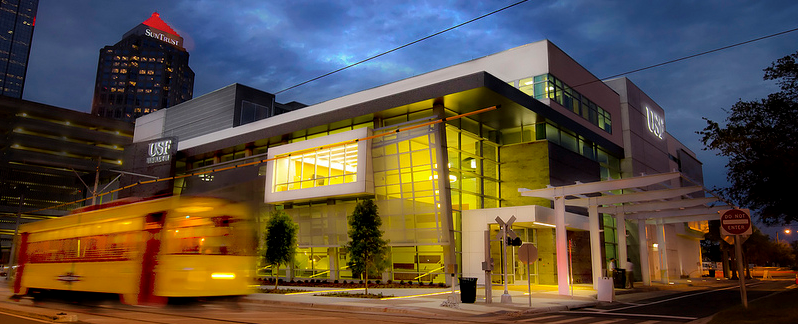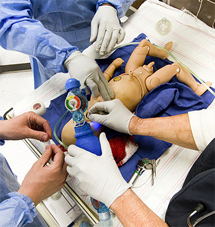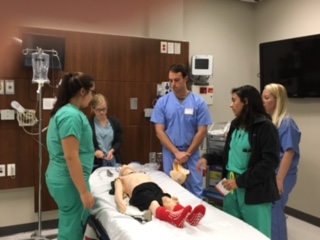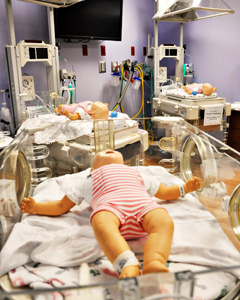Pediatrics Residency
Simulation

Facilities

Simulation Education gives healthcare providers the opportunity to practice, hone and retool clinical skills, and to develop behavioral and teamwork skills needed for real-life patient encounters. Optimally, these skills are learned under realistic conditions that do not pose any risk to patients. The combination of simulation to improve clinical skills and team training to enhance behavioral skills optimizes the performance of medical team members, leading to better patient outcomes.

USF residents will have scheduled simulation experiences several times a year at two state-of-the-art simulation facilities. The simulation curriculum includes training in common pediatric procedures like lumbar puncture, intraosseous cannulation (IO), and intubation. Scenerio training incorporates Pediatric Advanced Life Suport (PALS), Neonatal Resucitation Program (NRP), DKA, status epilepticus, shock, and many other common pediatric emergencies. We have also woven in an innovative ethico-legal curriculum that incorporates common social and ethical challenges that “real life” pediatric emergencies often entail.

USF Health Center for Advanced Medical Learning and Simulation (CAMLS)
CAMLS is a state-of-the art three-story, 90,000 square foot facility with all forms of health professional education and training under one roof. CAMLS integrates simulation technology, aviation science, team training and evidence-based best practice into innovative programs by combining cutting-edge simulation with research and innovation. It contains:
-
39 surgical stations which includes a robotics suite with two Da Vinci robots, the world's first hybrid catheterization lab/operating room, and the first trauma operating room that can change environments to suit different training purposes.
-
The Virtual Patient Care Center (VPCC) with six standardized patient exam rooms and five team training rooms. They are set up with audiovisual recording to allow for in-depth debriefing and analysis in three dedicated rooms. There are eight individual training rooms for a variety of tasks such as airway management, central line placement, lumbar puncture, and trauma resuscitation. There are also several realistic neonatal, pediatric and adult human patient simulators, including combat casualty, birth, and surgical simulators.
-
There is outstanding conference room space including a 200-person auditorium hard-wired for satellite video-conferencing and audience response system with internet access, along with several adjacent classrooms and board rooms.

Johns Hopkins All Children’s Hospital Simulation Center
The JHACH Simulation Center includes a simulated neonatal area and a simulated hospital patient room that can be used for ward, emergency, and critical care scenarios. Each room is equipped with a viewing bay with double sided mirrors and an adjoining conference room for debriefing sessions. Five high-tech mannequins ranging in age from newborn to young adults are given commands to simulate a variety of medical situations. Staff participating in the training respond to the various scenarios and provide the appropriate medical response. Mannequins respond in real time based on the type of medical treatment they receive (i.e. improvement if correct treatment and deterioration if improper care). The Simulation Center is also equipped with cameras that film each exercise and allow participants to critique their performance to gain improvement in the care provided to actual patients.